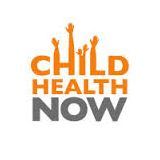
Executive Summary:
We are making remarkable progress in child health. As an international community of families, civil society, corporations, governments, the UN and organisations like World Vision, we should celebrate the success we’ve seen in the past 20 years, reducing the number of preventable deaths of children under the age of five: from 12 million children in 1990, to nearly seven million in 2011.
But the number is still far too high. Every child lost is a tragedy for their family, community and country. And every child lost is a reminder that we have a lot of work left to do.
As we make the final push towards the deadline for the Millennium Development Goals (MDGs), we rightly feel an urgency to do more, to do everything we can to understand – and take action on – the reasons why we are still so far off reaching the MDG targets that UN member states set themselves in 2000. Put simply, we have failed to reach the poorest and most vulnerable children.
World Vision has produced the Global Health Gap Index to try and do exactly this; to analyse where and why children are still dying, and to outline what can be done. This Index demonstrates that despite global progress in reducing the number of deaths of children under the age of five, some of the poorest children in the world are still not being reached. It is a timely and stark reminder that the gap between those who have good access to lifesaving health services and those who don’t remains unacceptably large.
Nisha Das, a confident and inspiring 15-year-old from India, is a powerful reminder of why inequity matters: for the children whose lives are being saved, and the millions more who we need to concentrate on reaching.
“I feelsad to see children all over the world are still not treated with dignity and equality in spite of the world moving so forward. It is a paradox. Many children are not educated and not included in societies because they are poor, disabled or invisible in society,” Nisha told the UN when she spoke at an inequality debate recently. “Children need the same opportunities whether they’re rich or poor, boys or girls, disabled or not.”
With little more than 800 days until the MDGs deadline, at World Vision we are working with families and communities to amplify voices like Nisha’s. Join us at www.childhealthnow.org to urge leaders to do what they can to close the gap in children’s health:
- Ensure that greater attention at the highest political level is given to closing the health gap for women and children.
- Address the problem of missing data for vulnerable groups by establishing routine data collection systems locally, nationally and internationally to measure the health gap.
- Engage and empower families and communities in data collection and in the planning, delivery and review of health services.
- Prioritise child and maternal health in the post-2015 development agenda, through the inclusion of ambitious goals to end preventable child and maternal deaths and significantly reduce stunting.
Andrew Hassett
Child Health Now Campaign Director
World Vision International
Download more resources and help spread the word through your network! Here is an example poster ready for download and promotion: